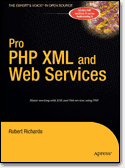While playing around with the identity technologies, I decided to get myself an i_name and give it a spin. I am
=Rob.Richards (or using my i-number: =!4015.A5A3.AE2A.54B9). An i-name is similar to a domain name. Just like my website is identified by my domain name, I can be identified by my i-name. In the event i-names catch on, I figured it was a good idea to get the one I wanted now rather than take my chances later. Do you know how many people right now confuse me with this
Rob Richards? Just so we are clear - that is
NOT me

.
You might notice that I am using the xri.net url for my i-name, though when you access it, it resolves to 2idi.com. 2idi is the broker where I got my i-name. It is perfectly valid to use their urls when resolving my identity, but by using xri.net, I could move my i-name to another broker down the line and have no need to change any of my contact links. Due to having to resolve the address to my broker, it is a little slower doing it this way, but at least I wont have to change anything down the line if I change brokers.
So why did I get an i-name?
When you get an i-name you also currently get 3 services (they say more are coming). Authentication, Contact, and Forwarding. Supposedly an i-name can be used where an OpenID is accepted. I
think this was introduced with OpenID 1.1, but finding its a crap shoot on where it actually works. The funny thing is I tried to login at http://www.openidenabled.com/ using my i-name, but it wouldn't take. Just got a lot of errors. I then found some random blog on the net that was OpenID enabled and my i-name worked fine to login. I wasn't discouraged as I know things are still coming together in the identity space, but it is nice to see them starting to work together.
Contact
Another nice feature of the i-name is that it can be used to contact me via email and provide a buffer that I am finding is helping reduce spam. Before getting an i-name, I did not provide a link of my blog to contact me. It was up to people to already know how to send me a message - cant you tell I am a people person

. If you notice the link in the top right corner, I now provide my i-name as a way for anyone to send me a message. Clicking on
=Rob.Richards takes you to my contact form. When a message is sent, the system checks the senders identity either through their i-name if they have one or the e-mail address they supplied. Just like most blogs and forums, the email address of the sender (if they don't have an i-name), is validated. Once validated the message is delivered to the email address I have configured with my broker, which also lets me easily change email providers without having to update the address everywhere (assuming I provided people with my i-name).
Forwarding
Although someone could do this on their own using urls and redirects, the forwarding service provides a simple way to provide additional information about myself (if I so desire) using my i-name. XRI defines a number of keywords (identified by their use of the "+" before the key) that can be used as a standard way of locating certain subset information of an i-name. Take for example my blog. You can access it using the domain name
http://www.cdatazone.org or using the +blog key with my i-name,
http://xri.net/=rob.richards/(+blog). As long as I have that forwarding set, people are sent to my blog; the address which I could even change at will if I like. Although I could use any key indicator I like, it is best to stick with the pre-defined keys from XRI, just because they provide a standard way to to locate additional information. The following are a list of these defined mappings:
(+blog) (+home) (+resume)
(+call) (+links) (+songs)
(+chat) (+photos) (+work)
(+email)
I-names aren't free
Unlike how easy and free (as in no cost) it is to obtain an OpenID, you must purchase an i-name. This is equivalent to purchasing a domain name. A couple of years ago when i-names were first introduced, they were being issued to the first 150,000 or so people for $25 for 50 years. Of course they were new and trying to push their adoption, so of course they were cheap. Jump ahead to 2007 and I just dished out $20 for 1 year. Personally I think that right there is going to slow adoption of these things drastically. They are not widely used yet and alternative (and cheaper) technologies are out there. They might not offer the exact same services but for most people they would opt for the free over functionality they may or may not ever need. Another thing is that because i-names are valid for 1 year at a time, they have the same problem as using a domain name. Once you registration is up (god forbid you forget to renew) someone else could assume that i-name and now people are wondering where your alter ego came from. I really think if i-names are to gain traction, they either need to drastically reduce the code and/or increase the amount of time they are good for. I can get domain names much cheaper than an i-name so personally unless i-names introduce some killer feature, I could purchase a domain name, setup an OpenID server with some hosting provider and use that cheaper than getting an i-name.

